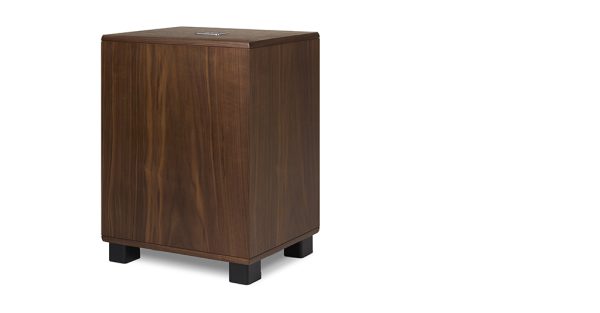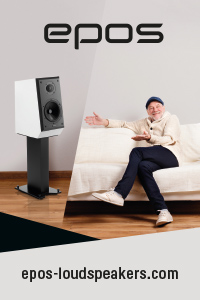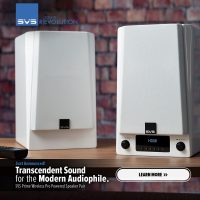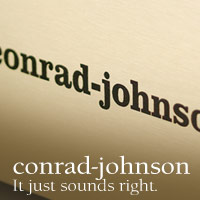
While this may sound like one of those AI-generated comments, if you’ve seen, heard, or read about REL’s recent addition, the Classic 98, you know that this is something different than the standard bill of fare from REL. The Classic 98 takes the punchy, linear, extended, and tuneful sound that REL is famous for, but tunes the vibe more to that of a vintage, or perhaps even (dare we say it) classic British sound.
Before REL, subwoofers often had a tough time keeping up with the main speakers in terms of musical pace. Some would refer this to speed, as in the woofer wasn’t fast enough to keep up with the mains, delivering an over extended, often bloated, one note bass – leading so many to proudly exclaim they would never use a subwoofer. Duly noted and often correct, because a subwoofer that does not integrate seamlessly with the main speakers often feels like that person in the marching band playing way too loud for the rest of the musicians. When the sub is too fast and articulate for the main speakers, a similar effect occurs – but now the mains sound foggy and bloated.
As mentioned in the Classic 98 review, John Hunter, the designing force behind REL has a love for vintage speakers, just as many of you do, and if you’ve tried a modern sub with them, sometimes it doesn’t sound quite right. With the Classic 98s slightly mellower sound, connecting a pair of Vintage JBLs, a pair of Harbeths, or my favorite – a vintage pair of Acoustat 2+2 Electrostatics is just right.
The Classic 98 features a 10” down-firing woofer and will set you back $1,399.

The all-new Classic 99 has a 12” down-firing woofer and is $1,899. With that bigger driver comes a 500-watt amplifier (limited to 450 watts in this application) vs. 300 for the 98. PRO TIP: if you bought a Classic 98 and still feel you need just a little more juice, the Classic 99 looks exactly the same, even though the cabinet is over 45% bigger. If you live with someone who is slightly gear adverse, just sneak home on your lunch hour, swap ‘em out and no one will know. I did this to my ex-wife once when I went from Vandersteen 1s to 2s. Works like a charm.
The walnut cabinet stays tastefully in the vintage/mid-century vibe and is built robustly, like every other REL we’ve used, with the same functionality on the rear panel. This means connecting it to your system via the REL Speakon connection at the speaker outputs of your amplifier, via RCAs from your preamplifier, or wirelessly with REL’s adaptors. I’ve always had the best result with the high-level speaker outputs, because that feeds your REL what’s coming right out of the power amplifier and going to the speakers, but you may need other options.Because of that REL supplies a single channel of Low Level via RCA (uses the same filter as the High Level uses) plus a dedicated theater LFE input, also RCA but this one has its own dedicated Level control.
A more in-depth review is on the near horizon, but for now, the Classic 99 delivers another scoop of what you love about the 98. The bigger woofer, bigger cabinet feels even more effortless than the 98, and will probably suit itself more to bigger rooms than the 98, but again, we’re going to compare the two closely in three different room sizes for the final review.
Using the Classic 99 in a 24 x 36 foot room with the Acoustats about 12 feet apart on the 24 foot wall with the 99 in the right corner works incredibly well, but a second one is probably in the cards. With the crossover set relatively low (my guess about 40hz) the blend with the Acoustatsis perfect. Fortunately, having set up a number of RELs in the past and getting a lot of tips from Mr. Hunter has me in sonic bliss very quickly.
Running through some familiar 60s, 70s, and 80s tracks is absolutely lovely. Those ‘stats still sound as good as they did years ago, but with the extra foundation that the Classic 99 provides, so much more inviting.
At higher listening levels (right before the ESL panels bottom) the presentation is much more dynamic, yet at low to medium levels, the soundstage expands in all directions and it’s easier to be involved thanks to the additional low frequency energy now present. While it’s easy to look to a subwoofer for “more bass, dude,” what REL always brings to the table, is an increase in midrange resolution and a much bigger sound field as a result.
Tracks that don’t have as much low frequency information impress just as much as the ones that do. That’s the magic of the REL Classic 99. Perfect for those of you who love the Classic 98 but feel you needed significantly more due to either using larger speakers or having a bigger room than the 98 could handle. The Classic 99 reminds me a lot of the old Stentor II of the late 90’s, though that old heavyweight weighed in at around 100 pounds and cost $6,000 back then. Highly Recommended.









